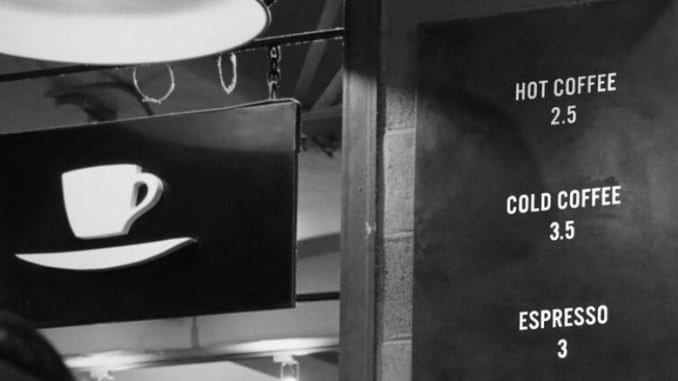
A discussion of coffee cup sizes can’t happen without Ninth Street Espresso. Now in operation for over 15 years, we look at the history of their menu and how its modifications reflect larger changes within the coffee industry as a whole.
BY ASHLEY RODRIGUEZ
BARISTA MAGAZINE ONLINE
In 2001, Ken Nye opened up a coffeeshop in the East Village neighborhood of New York. Ken, a lifelong New Yorker who grew up going to cafes all over Manhattan, is often given the distinction of being the first person to open a specialty coffee shop in New York City.
Now, with a couple more locations scattered throughout the city, Ninth Street Espresso is still one of the most innovative shops within the coffee community. As we looked at coffee cup sizes and the case for serving both smaller and larger sizes, we would be remiss if we didn’t talk about how Ken and his team have spurred a number of trends that have fundamentally changed the way we serve coffee. Let’s look at the evolution of their coffee menu and how it reflects larger shifts in the way the industry looks at service, quality, and customers.
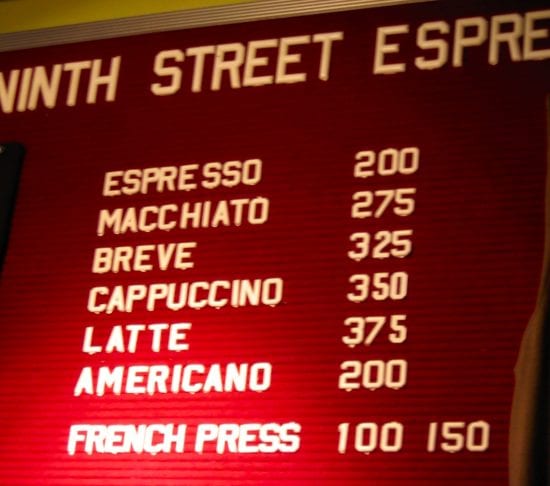
2001-2006: Beginnings and the Black Letterboard Phase
Ninth Street Espresso opened its doors in 2001 with a few different cup sizes. “Basically all we did in ’02 and ’03, which was pretty much the standard, was 10, 12, and 16. … Eight [oz.] were uncommon, but we thought it was an appropriate size,” shares Ken. Eventually, in 2003, Ken decided to do away with the 16-ounce cup, and all drinks were served in 8, 10, or 12, which was pretty bold for that time. “I think the feeling at the time was that you couldn’t do that. You could go smaller but you couldn’t get rid of bigger.” Although a few customers were peeved, Ken reports that the change was well-received—customers were on board and he and his team of baristas felt confident serving drinks.
So why eliminate the bigger sizes? Because Ken was pushing Ninth Street to be an espresso-forward cafe. “If anything, it was motivated by the fact that if you were focused on espresso, everything should be scaled down … we were very espresso-focused, almost all of my business was motivated towards building espresso.” And part of the decision was the mood and tone of specialty coffee at the time. “Especially back then, we all had a bad attitude, and we all thought it was our job to be preaching to the coffee-drinking community and telling them what to do. It was that moment in time.”
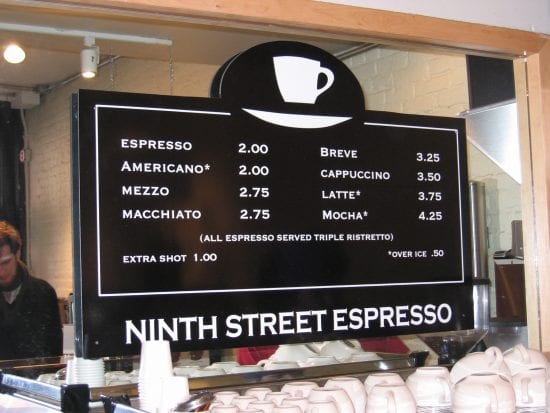
2006: The Seven Item Menu and the Elimination of Cup Sizes
Before 2006, Ninth Street’s menu was already seen as pretty bare bones. At yet, even with a slimmed-down menu, ordering could be difficult and people could still ask for 12-ounce macchiatos or in general just make drinks that baristas didn’t feel confident serving. “We kept joking that we should take everything off our menu and just do the things we like.”
So Ken decided that there would be no sizes. “In 2006, we decided, screw it—there’s no more small, medium, large anything. There’s no optioning out.” Every drink—a latte, a cappuccino—had just one size, and you couldn’t customize or make any changes. There were only seven things you could order, and there was no room to modify. “We can’t allow people to treat it like fast food. That created a huge ripple. Not only were the cup sizes a lot smaller, but now you couldn’t tell us what cup size you wanted your drink in.”
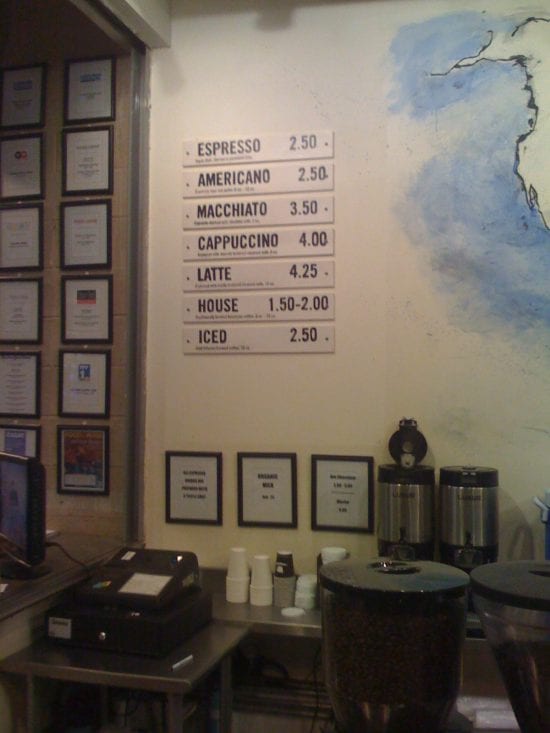
This is the moment where cafes began to take notice. “At SCAA [that year], everyone wanted to talk to me about the menu,” asking him to give them a call if he was still in business a year from now. People either mocked the idea or wanted to use it in their own cafes. But at that time, no one had quite the reputation for being brash like Ninth Street. “We were a little ballsy, and we were a little rough around the edges.” Ken also notes that the decision to cut out sizes was a response to the way in which most cafes treat their coffee drinks anyway. “We were getting away from the great unknown that we were gonna steam your milk differently or extract coffee differently, which has proven to be the case years later,” he shares.
2009: Ditching Names
Although the new menu ruffled some feathers, it was wildly popular amongst both the staff of Ninth Street and the barista community at large. Eventually, other cafes began following suit, and Ken continued to tinker with his pared-down menu. “I liked it so much each year we fine-tuned it more and more.” However, there were still perceptions of drinks, like lattes and cappuccinos, that had such strong ties to their nomenclature that Ken decided to do away with names all together. “For awhile, we did the numbers—three, six, and nine.”
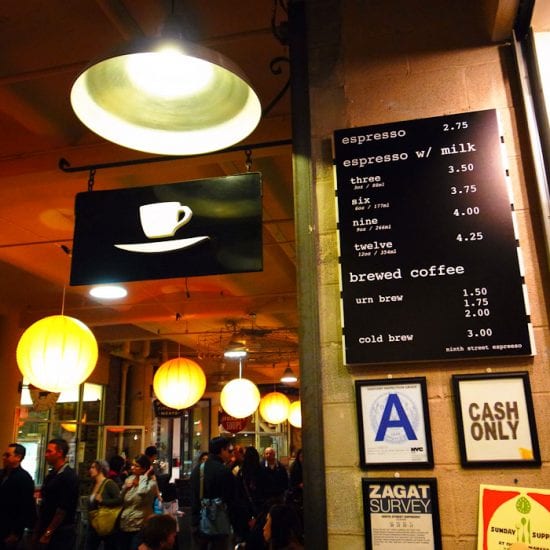
Essentially, Ninth Street wanted to communicate that all drinks were just two ingredients in different ratios. “When you’re talking about all drinks—macchiatos, gibraltar—they’re all basically a combination of espresso and milk.” And to order a latte at one cafe could be different from the experience that Ninth Street was offering, so ditching the nomenclature helped overcome people’s perceptions of drinks. “We got fed up with the recipes that specialty coffee shops were claiming for drinks,” which could potentially set up their customers for drinks they weren’t going to get, and made communication between baristas and customers difficult.
But, as Ken notes, the tides of specialty coffee were beginning to change, and he notes that the changes he made to his menu didn’t exactly create a hospitable environment. “At the same time, what I describe to you didn’t coincide with good customer service. We all learned years later that the big void in coffee was customer service.”
2012-Present: Back to Customer Service
Eventually, we as an industry realized that coffee and customer service go hand in hand. Ken began to realize this as well, and adjusted his menu to allow people to feel comfortable, knowing they’ll get a drink they like. “Now what we do … if you want espresso and milk, we’re gonna start a conversation with you and see what experience you’re trying to have and apply it to the cup we think works best. I think that’s the nicest way to combine small cup sizes, restricted menu options, and still give people want they want.”
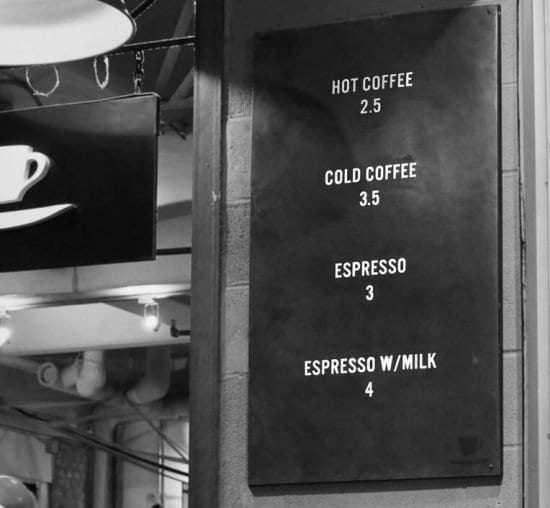
The menu is the shortest it has ever been, but there’s now more room for baristas to chat with customers. The items are simple: hot coffee, cold coffee, espresso, and espresso with milk. “Four items, four prices. … If you tell me the drink you love is this combination of milk and espresso, no matter what size you want or want to call it, we’ll charge the same price.” At the end of the day, quality standards are important, but if people don’t have a drink they like, then what does it matter? Ken believes this menu allows for higher customer satisfaction while still making high-quality drinks.
The question now is what next? “I don’t know what this will evolve into,” he says. Currently, the standard is still the Ninth Street menu of 2006, but many cafes are beginning to steer away from that as well. Will there be no menus? Menus with everything under the sun? It’s too early to tell. But it’s a good bet that Ninth Street has thought about it, and has maybe even already tried it.


Great article but the title is completely misleading. Your focus seems to be more on the menu and less about the actual size. In fact, you mention there is only one size but actually don’t state what the size is.
Maybe re-title the article to be more focused on menu and less about cup size.